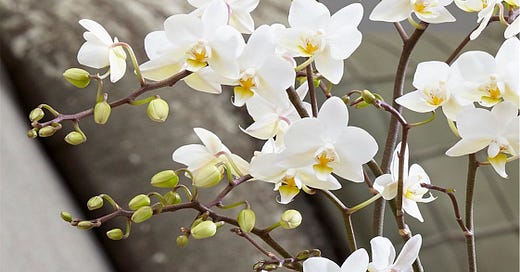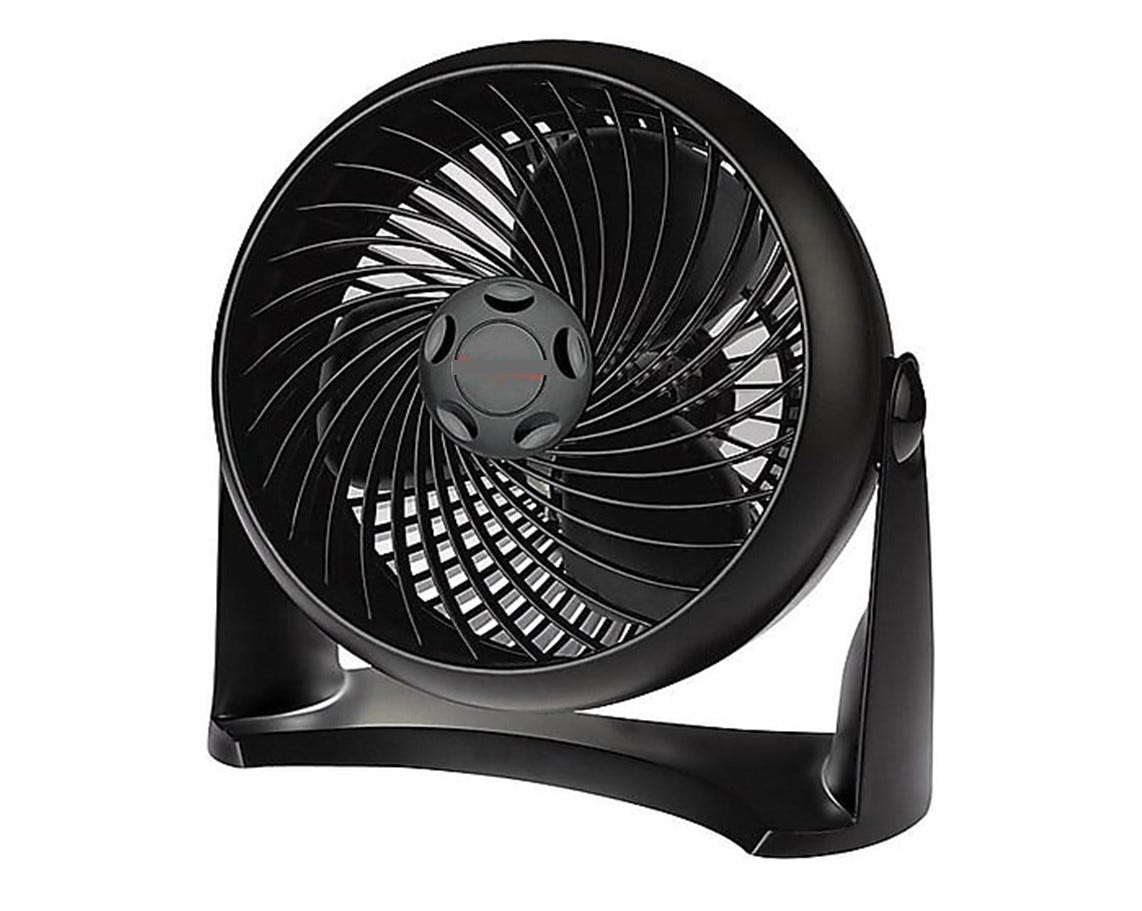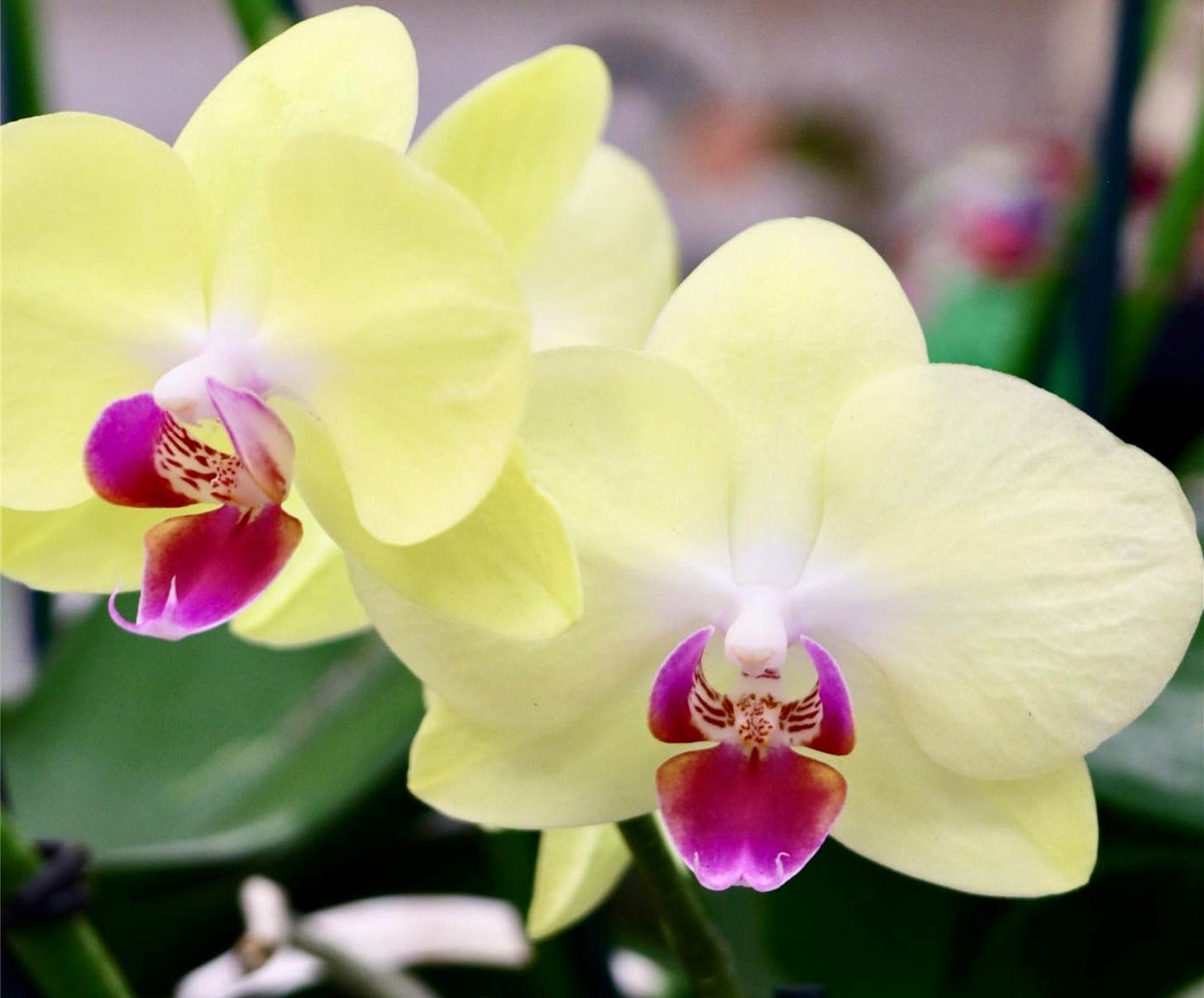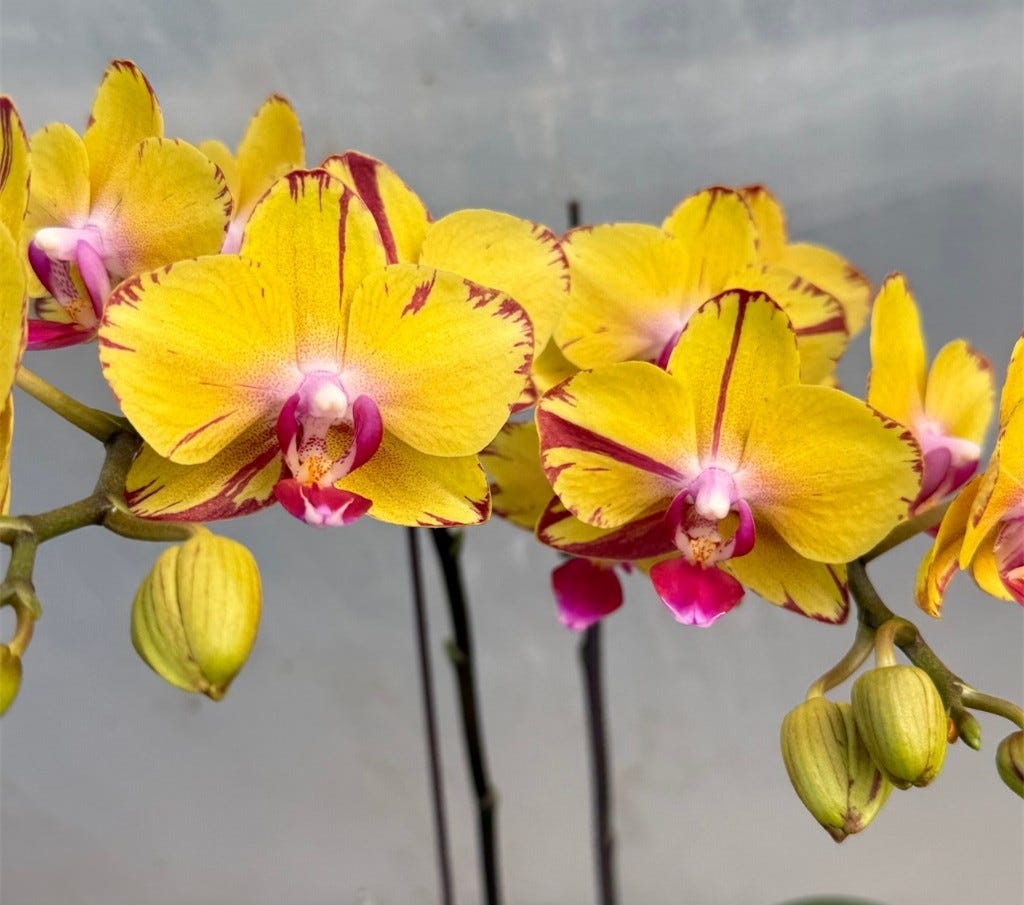MOTH ORCHIDS (PHALAENOPSIS) – THEIR INDOOR CARE IN DETAIL – Part 1
A Starting Point: Lighting, Temperature, Humidity, Air Circulation, and Watering
Phalaenopsis (pronounced Fail-en-OP-sis or Fal-ih-NOP-siss), commonly called “Moth Orchid,” is the most popular orchid in indoor settings. Phalaenopsis amabilis (pictured above) is the core species that homeowners grow and, crossed with a few other Phalaenopsis species, it makes up the vast multitudes of hybrids sold almost always as unnamed blooming seedlings in florists and supermarkets everywhere.
Overall, it’s one of the easiest orchids to grow with a good allowance of forgiveness. But getting the most out of it, especially in terms of flowers, is nuanced.
LIGHTING
Phalaenopsis prefer a bright window, with little or no direct sun. An east-facing window might be best, but any sunny (south or west) window with deep awnings outside or with shaded protection inside (such as with a sheer curtain) is acceptable; In overcast northern winter climates, a full south exposure may be needed.
If you have fun with a light meter (photographers’ equipment or a cell phone app), Phalaenopsis like 800 to 1500 foot-candles (10,000-16,000 lux [lumens/square meter]).
Most Phalaenopsis will grow well under artificial light. Use appropriate bulbs that put out greater than 10,000 lux and set about 1 to 2 feet above the plant.
Plants receiving the proper amount of light will have light to medium green (maybe olive) leaves. Too little light produces leaves that are dark green and feel very stiff. With too much light, leaves will appear yellow green or almost yellow and will show a pink or reddish color along their margins.
Phalaenopsis plants have a tendency to lean in one direction, almost always because of lighting. If this gets to the extreme – whereby the plant appears to be on the verge of falling out of the pot – it helps to rotate the plant one-quarter turn each week. However, if what could be a super display of flowers is critical, leave it in the position that best shows off the flowers.
Some find that moving the plant to a slightly less sunny window in winter for a month or so encourages flowering on a bloom-shy plant.
TEMPERATURE
If at all possible, read the temperature at the exact location of the plant.
Temperatures for Phalaenopsis should be not much above 65°F at night (oh-so-slightly lower in autumn-into-winter) and sit in the 70°F to 80°F range during the day. They do need that drop between day and night. Night temperatures of 55°F to 60°F are needed for several weeks in the autumn to initiate flower spikes. Strongly fluctuating temperatures day to day can shed buds that are about to open.
Keep plants away from radiators, heaters, and heat vents. Conversely, keep them out of the kinds of drafts that happen when an exterior door is regularly opened and cold air is pulled in and certainly away from the blow of an air-conditioning unit.
The higher the temperatures, the more vegetative growth; up to a point. At some point, those higher temperatures must be tempered by higher humidity and breeze-like air movement.
HUMIDITY
As with most orchids, Phalaenopsis loves humidity somewhere in the 50 to 80 percent range. That’s great in a greenhouse, but not without problems in a home and it’s actually hard to achieve indoors (except in those regularly humid parts of the U.S.). A relative humidity of 30 to 50 percent is recommended for human comfort.
If humidity in the home is below the 50 percent minimum for Phalaenopsis, you can and should enhance their growing area (not the whole house). Low humidity and too little water will result in wrinkled leaves.
A small-scale humidifier is probably the ideal method. That aside, you can place the plants on trays of gravel/pebbles, partially filled with only enough water so that the bottom of the pot sits on top of the gravel/pebbles without sitting in the water.
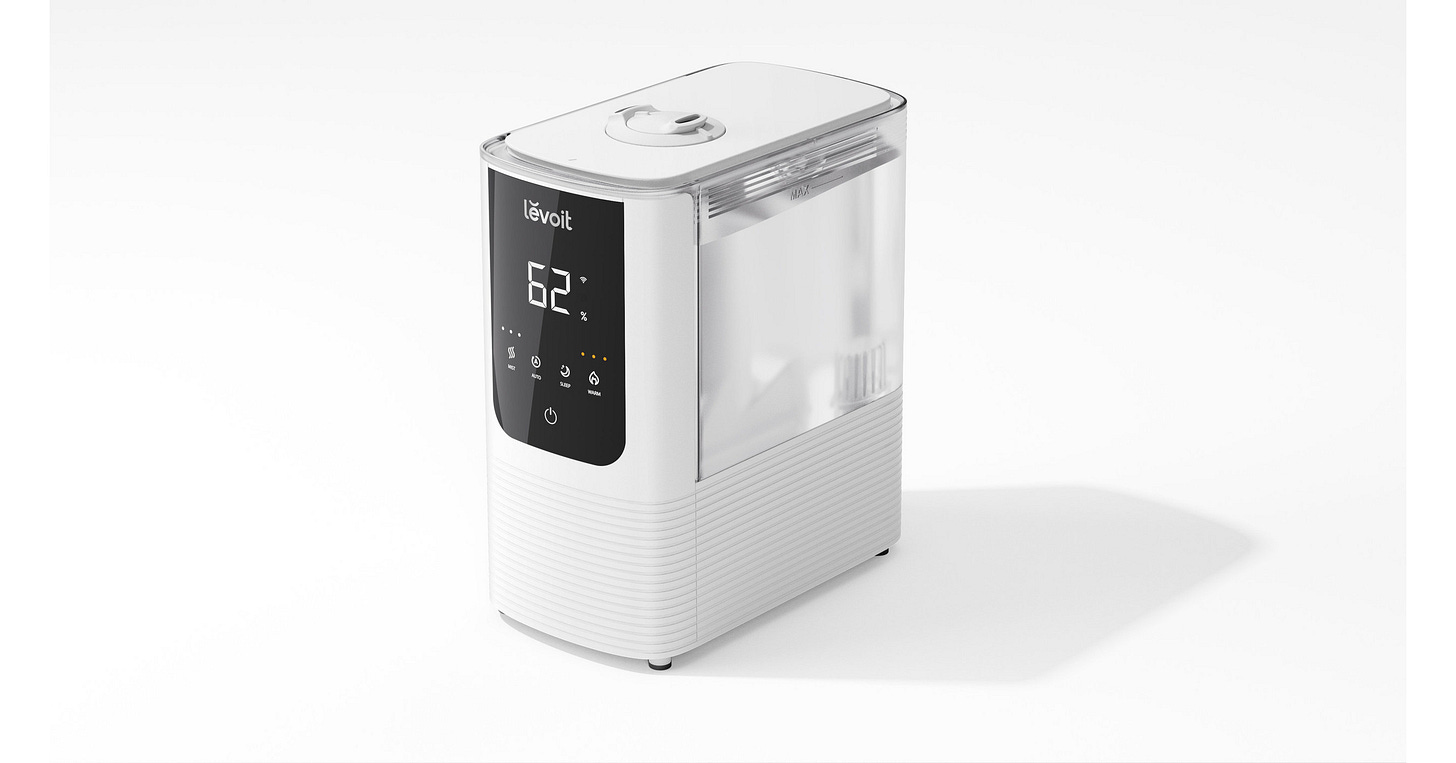
A potentially problematic option is to group plants. The drawback here is that such grouping cuts down the air circulation, the third part of the temp-humidity-air-circ troika, and that brings those problems.
Don’t mist plants. It’s a temporary “fix” only and it comes with the side-effect of sticking dust to your plants’ leaves.
AIR CIRCULATION
Air circulation is as crucial to good orchid growth as the other basic elements of care (lighting, temperature, humidity, and watering).
Air should always be moving around the plants. Why? Good air movement:
Moderates temperatures.
Prevents excessive moisture/humidity.
and tempering temps and humidity prevents fungal or bacterial disease, especially if high humidity or cool temperatures exist.
Minimizes pest infestations.
Strengthens flowering stems.
Prevents dust from settling on plants (dust can clog breathing holes.
Helps plants “breathe” better.
Indirectly encourages better root growth.
How to enhance air circulation:
Provide adequate space between plants.
Keep smaller plants up off the ground.
Use a fan. The idea is to move the air in the room as a whole, rather than providing a blast of air directly at the plants. Keep fans clean.
Ceiling fans are minimum.
A standing oscillating fan is the best inexpensive fan. It should be aimed so that it moves the air above the plants.
The better tabletop/desk fans are designed for creating optimum air movement. Get an oscillating type (almost all are) with a deep housing (rather than a cage). They can be set on tall shelving (best), on countertops, or even down on the floor.
Stand by your plants with the fan(s) on: You should be able to feel the lightest of breezes. If the breeze is too strong and uncomfortable to you, it can physically break flower stems and can actually pollinate any flowers, which shortens their life.
WATERING
Although Phalaenopsis have somewhat succulent leaves, they have no major water-storage organs. Some of the other orchids have “pseudobulbs” (exaggeratedly-swollen stems that produce the leaves); these include Cattleyas (and their many kin), Cymbidiums, many of the very large Oncidium Alliance, and one of my favorites, Zygopetalum. Other orchids have thickened “canes” (upright stems) such as Dendrobiums and Epidendrum.
A few orchids “escape” water shortages by dropping all or almost all of their leaves, such as many Dendrobium, some Calanthe, and Lycaste. Of course, the many hardy terrestrial (outdoor) orchids, including the popular Bletilla and Pleione, are totally deciduous, wherein they die completely to the ground each year. All orchids, including Phalaenopsis, will drop some leaves over the course of the year (the older, lower/inner ones); it’s a natural thing and as long as it’s not excessive, it’s nothing to be concerned with.
But Phalaenopsis has no such serious water-saving mode so it must be watered regularly when in active growth and/or flowering. As with almost all plants, they should be watered thoroughly and slowly when you do water, providing enough water so that excess runs out the bottom (make sure you have an adequate saucer). After watering, they should not be watered again until nearly dry.
That’s the straightforward technique that works, as said, with almost all plants. But what complicates watering of commonly purchased orchids is that they come planted in containers filled with chipped bark. Bark, not to be confused with simple wood chips, has a waxy coating that makes water saturation frustratingly slow (seemingly impossible). The common way to adjust the watering technique to the slow-absorbing bark, is to place the plant, sans saucer, in a sink or tub. Then run warm (slightly above room temp) water over the plant, bark, and aerial roots in three or four drenches over no more than a ten-minute period, allowing the water to be gradually absorbed between each drench. Allow the water to drain completely before placing it on a saucer and returning it to a sunny window. This whole chipped bark thing needs to go (more later).
How often you’ll need to water will depend on:
The amount of actual sunlight the plant gets,
The temperature at the site,
The humidity surrounding the plant,
The size of the plant,
The size of the pot,
The type of potting soil (not just bark),
The growing season (active or not).
Sunlight: More sunlight, more frequent watering. Less sunlight, less frequent watering. See light level recommendations under the major heading “LIGHTING.”
Temperature: In the heat of summer, especially in a dry climate, you may need to water every other day. On the other hand, in the winter in a cool, minimally-heated greenhouse way up north, it may be every 10 days.
Humidity: Humid air will keep evaporation from the pot at a low level, hence less watering frequency needed.
Size of plant: Actively-growing large plants generally suck up water more than smaller plants. On the other hand, large plants require or at least will tolerate less frequent watering during their growing down time. The smallest plants can be tricky to water; if they are only just past the seedling stage, they will require regular, frequent watering.
Size of pot: Given a good potting soil (not just bark) and a suitably-sized plant, the larger the pot, the less the frequency.
Potting soil: Here’s a big one. Almost all Phalaenopsis are sold planted in bark chips as the only “medium.” This bark is the least water-retentive of any potting medium, hence requiring the most frequent watering schedule. It’s meant to provide the all-important drainage that epiphytic orchids need. The most common killer of cultivated orchids is root rot, which is caused by the overwatering-poor drainage alliance. And bark is, after all, the ultimate counterbalance to that. So we are asked to water frequently in a delicate dance. But there are better potting mixes that drain remarkably well yet hold just the right amount of moisture. The bigger the chips, the more frequent the watering; other soil mixes vary. More next week.
Growing season: Actively-growing moth orchids (generally during the warmest, sunniest months) need the most frequent watering. But watering frequency will need to be reduced considerably during the short-day months when the orchids slow down their growth.
Additional Watering Methodologies/Tips:
Do not use salt-softened water on Phalaenopsis (or any house plant).
Do not use ice cubes to water your plant. Phalaenopsis are shocked by cold temperatures, causing root death. In addition, a few ice cubes do not provide enough moisture.
Rainwater is excellent if you collect it from a clean source.
Otherwise filtered water that has been standing for at least 24 hours to allow any chlorine and fluorine to evaporate.
Water orchids in the morning so their leaves will dry before nightfall. Wet foliage at night is conducive to causing disease.
Do not let water collect in the crown to prevent crown rot. If water remains in the crown of the plant wick it out with a paper towel or basting tool.
Aerial roots will turn from a dull silver or white to a pale green color when you have applied enough water.
“Once a week” is not a recommendable watering schedule.
.
Next Week: “Fertilizing, Staking, Encouraging Re-Flowering, and Repotting”
© Copyright, Joe Seals, 2025


